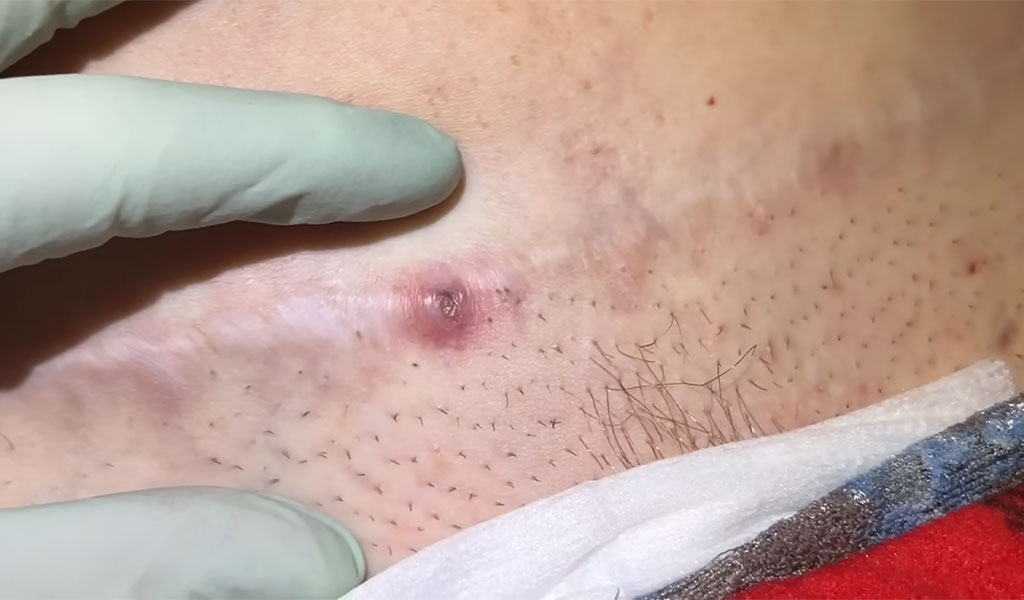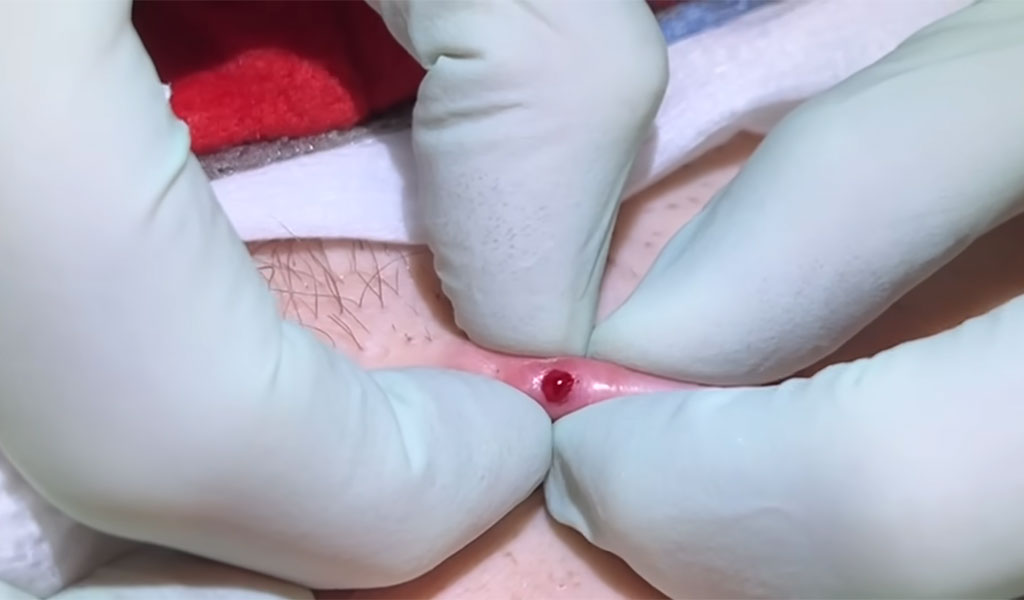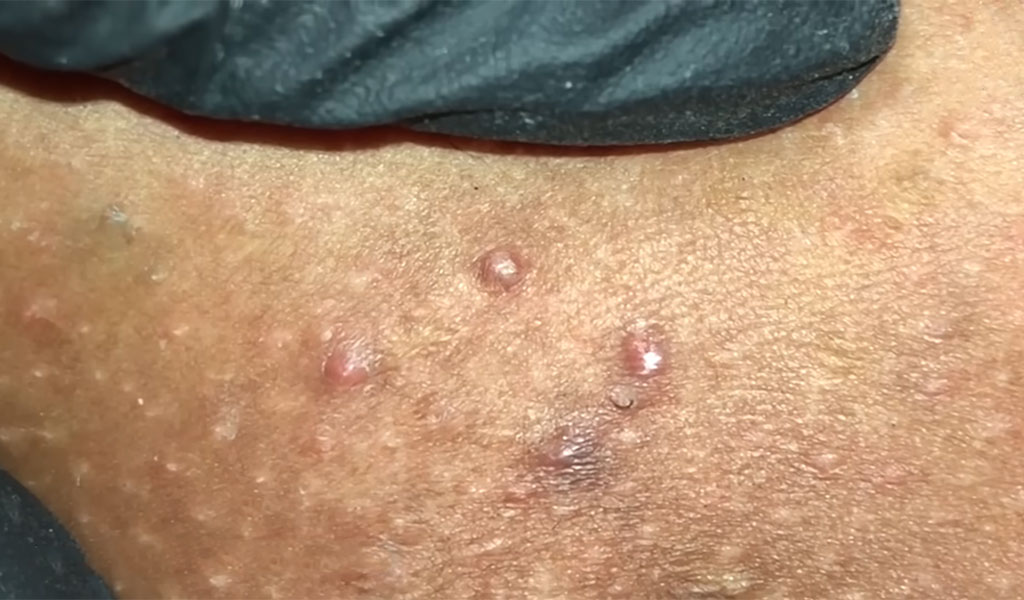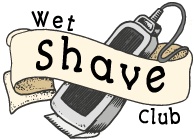Are ingrown hairs causing you frustration and discomfort? If so, you’re not alone. Dealing with ingrown hairs can be a common nuisance for many individuals.
However, the good news is that there are effective strategies to prevent them and maintain smoother, healthier skin. In this blog post, we’ll explore how to prevent ingrown hairs comprehensively.
From proper hair removal techniques to regular exfoliation and skincare practices, we’ll delve into the various factors that contribute to ingrown hairs and provide actionable tips to keep them at bay.
Whether you struggle with ingrown hairs on your face, legs, or bikini line, implementing these preventive measures can help you achieve smoother, irritation-free skin and say goodbye to the frustration of ingrown hairs. Stay focused.
How Ingrown Hairs Develop?
Ingrown hairs, medically known as pseudofolliculitis barbae, occur when a hair grows back into the skin instead of rising up from it.
While they can affect any hair-bearing area, they commonly appear in areas where hair removal is common, such as the face, neck, armpits, and pubic region.
Understanding how ingrown hairs develop involves delving into the intricate processes of hair growth and skin physiology.
Hair Growth Cycle
The hair growth cycle comprises three phases: anagen (growth phase), catagen (transitional phase), and telogen (resting phase).
During the anagen phase, the hair shaft grows from the hair follicle. As the hair reaches its full length, it stops growing, and the follicle begins to produce a new hair.
Hair Removal Practices
Ingrown hairs often arise due to hair removal practices that disturb the natural hair growth cycle. Shaving, waxing, plucking, and even tight clothing can lead to ingrown hairs.
When hair is cut or removed, it may regrow at an angle, curling back into the skin instead of growing outward.
Curly or Coarse Hair
Individuals with curly or coarse hair are more prone to ingrown hairs. The natural curling of the hair can cause it to re-enter the skin instead of growing straight out.
Additionally, curly hair tends to be thicker, making it more likely to become trapped beneath the surface of the skin.
Dead Skin Cells and Blockages
Dead skin cells can accumulate on the surface of the skin, blocking the hair follicles.
When a hair tries to grow through these blocked follicles, it can become trapped beneath the surface, leading to inflammation and the formation of ingrown hairs.
Skin Irritation
Skin irritation plays a significant role in the development of ingrown hairs.
Irritated skin, often caused by friction, rubbing, or harsh chemicals, can further block hair follicles and disrupt the natural hair growth pattern, increasing the likelihood of ingrown hairs.
Understanding how ingrown hairs develop involves recognizing the interplay between hair growth, hair removal practices, skin physiology, and individual factors such as hair type and skin condition.
Common Areas Prone to Ingrown Hairs

Ingrown hairs can occur in various regions of the body, but some areas are more prone to their development due to factors such as hair density, hair texture, and frequent hair removal practices.
Understanding these common areas can help individuals take preventive measures to minimize the risk of ingrown hairs.
Face and Neck
Shaving: The face and neck are frequent sites of shaving for both men and women. Improper shaving techniques or using dull razors can lead to ingrown hairs.
Curly Hair: Curly hair on the face and neck is more likely to curl back into the skin, causing ingrown hairs, especially in individuals with coarse facial hair.
Armpits
Tight Clothing: Wearing tight clothing, especially after shaving, can lead to ingrown hairs in the armpit area due to friction and trapping of hair beneath the skin.
Sweat and Moisture: The warm and moist environment of the armpits can contribute to skin irritation and blockage of hair follicles, increasing the likelihood of ingrown hairs.
Pubic Region
Waxing and Shaving: Hair removal methods such as waxing and shaving in the pubic area can disrupt the hair growth cycle, leading to ingrown hairs.
Friction: Friction from clothing and underwear can exacerbate ingrown hairs in the pubic region, particularly if the area is not adequately moisturized or exfoliated.
Legs
Shaving: Similar to the face and neck, improper shaving techniques or using dull razors on the legs can result in ingrown hairs.
Dry Skin: Dry skin on the legs can block hair follicles, preventing hairs from growing outward and causing them to become trapped beneath the skin’s surface.
Bikini Line
Tight Clothing: Wearing tight underwear or swimsuits can contribute to ingrown hairs along the bikini line by trapping hairs beneath the skin and causing friction.
Hair Texture: Coarse hair along the bikini line is more likely to become ingrown, especially after hair removal methods such as shaving or waxing.
By being aware of these common areas prone to ingrown hairs and implementing proper skincare and hair removal techniques, individuals can reduce the occurrence of ingrown hairs and maintain smoother, healthier skin in these regions.
How to Prevent Ingrown Hairs?

Ingrown hairs can be bothersome and even painful, but with the right preventive measures, they can be minimized or avoided altogether.
By understanding the underlying causes of ingrown hairs and implementing targeted strategies, individuals can maintain smoother, healthier skin. Here’s a comprehensive guide on how to prevent ingrown hairs:
Proper Hair Removal Techniques
One of the primary causes of ingrown hairs is improper hair removal techniques. Whether shaving, waxing, or plucking, the method used can significantly impact the likelihood of ingrown hairs.
- Shaving: When shaving, always use a sharp, clean razor to minimize irritation and ensure a clean cut. Shave in the direction of hair growth to reduce the risk of hairs curling back into the skin. Avoid shaving too closely, as this can cause hairs to become trapped beneath the skin’s surface.
- Waxing: If waxing is your preferred method of hair removal, ensure that the wax is applied in the direction of hair growth and removed in the opposite direction. This helps to pull hairs out from the root cleanly, reducing the chances of ingrown hairs. Additionally, exfoliate the skin prior to waxing to remove dead skin cells and facilitate hair removal.
- Plucking: When plucking hairs, be gentle and avoid breaking the hair shaft. Pull the hair out in the direction of growth to minimize trauma to the hair follicle and reduce the risk of ingrown hairs.
Regular Exfoliation
Exfoliation is key to preventing ingrown hairs as it helps to remove dead skin cells and unclog hair follicles, allowing hairs to grow freely.
- Mechanical Exfoliation: Use a gentle exfoliating scrub or brush to manually slough off dead skin cells from the surface of the skin. Focus on areas prone to ingrown hairs, such as the face, neck, armpits, and bikini line. Avoid over-exfoliating, as this can irritate the skin and exacerbate ingrown hairs.
- Chemical Exfoliation: Incorporate chemical exfoliants such as alpha hydroxy acids (AHAs) or beta hydroxy acids (BHAs) into your skincare routine. These ingredients help to dissolve dead skin cells and unclog pores, reducing the likelihood of ingrown hairs. Start with a lower concentration and gradually increase as tolerated to avoid irritation.
Moisturize Regularly
Well-hydrated skin is less prone to irritation and inflammation, making it less likely for ingrown hairs to develop.
- Choose the Right Moisturizer: Opt for moisturizers that are non-comedogenic and free of fragrances and harsh chemicals. Look for ingredients like hyaluronic acid, glycerin, and ceramides, which help to hydrate and strengthen the skin barrier.
- Apply After Hair Removal: After shaving, waxing, or plucking, apply a soothing moisturizer to calm the skin and prevent dryness. Moisturizing regularly helps to maintain the skin’s moisture balance and reduce the likelihood of ingrown hairs.
Avoid Tight Clothing
Tight clothing can trap sweat and bacteria against the skin, leading to irritation and ingrown hairs, especially in areas prone to friction.
- Wear Loose, Breathable Fabrics: Opt for loose-fitting clothing made from breathable fabrics such as cotton or moisture-wicking materials. This allows air to circulate freely around the skin, reducing sweat buildup and minimizing friction.
- Avoid Tight Underwear: In the bikini area, choose underwear with a comfortable, non-restrictive fit. Avoid thongs or tight panties that can rub against the skin and increase the risk of ingrown hairs.
Treat Skin Gently
Harsh treatment of the skin can disrupt the skin barrier and increase the likelihood of ingrown hairs. Be gentle when cleansing and avoid excessive rubbing or scrubbing.
- Use Mild Cleansers: Choose a gentle, non-abrasive cleanser that is suitable for your skin type. Avoid harsh soaps or cleansers containing sulfates, which can strip the skin of its natural oils and lead to dryness and irritation.
- Pat Dry: After washing, pat the skin dry with a soft towel instead of rubbing vigorously. Rubbing can irritate the skin and exacerbate ingrown hairs, especially after hair removal.
Consider Hair Removal Alternatives
If you frequently experience ingrown hairs despite taking preventive measures, you may want to consider alternative methods of hair removal.
- Laser Hair Removal: Laser hair removal targets the hair follicle, reducing hair growth over time. While it may require multiple sessions, it can provide long-lasting results and significantly reduce the occurrence of ingrown hairs.
- Depilatory Creams: Depilatory creams dissolve the hair shaft, allowing it to be easily wiped away. However, some individuals may experience skin irritation or allergic reactions, so be sure to patch test before use.
Seek Professional Help
If ingrown hairs become persistent or severe, consult a dermatologist for further evaluation and treatment options.
- Topical Treatments: Dermatologists may prescribe topical treatments such as retinoids or corticosteroids to reduce inflammation and promote hair growth.
- In-office Procedures: Procedures such as chemical peels or microdermabrasion can help to exfoliate the skin and prevent ingrown hairs. In some cases, ingrown hairs may need to be extracted by a dermatologist to prevent further irritation.
Preventing ingrown hairs requires a combination of proper hair removal techniques, regular exfoliation, moisturization, and gentle skin care practices.
Factors Contributing to Ingrown Hairs

Ingrown hairs can develop due to a variety of factors, ranging from hair texture to skincare practices. Understanding these contributing factors is crucial for effectively preventing and managing ingrown hairs.
Hair Texture and Curliness
Curly or coarse hair is more prone to ingrown hairs compared to straight hair. The natural curling of the hair can cause it to grow back into the skin instead of outward, especially after hair removal.
Improper Hair Removal Techniques
Incorrect hair removal methods, such as shaving too closely or against the grain, can lead to ingrown hairs. When hairs are cut or removed improperly, they can become trapped beneath the skin’s surface as they attempt to regrow.
Dead Skin Cell Buildup
Accumulation of dead skin cells on the skin’s surface can block hair follicles, preventing hairs from growing outward and leading to ingrown hairs. Exfoliation is essential for removing dead skin cells and preventing blockages.
Friction and Irritation
Friction from tight clothing, rubbing, or repetitive movements can irritate the skin and contribute to ingrown hairs, particularly in areas prone to friction, such as the armpits or bikini line.
Additionally, harsh skincare products or chemicals can further exacerbate irritation.
Skin Type and Sensitivity
Individuals with sensitive skin or conditions such as eczema or psoriasis may be more prone to ingrown hairs due to increased skin sensitivity and susceptibility to irritation.
Proper skincare tailored to sensitive skin types is essential for preventing ingrown hairs.
Hormonal Factors
Hormonal changes, such as those experienced during puberty, pregnancy, or menopause, can affect hair growth patterns and increase the likelihood of ingrown hairs.
Hormonal imbalances can lead to changes in hair texture and thickness, making ingrown hairs more common.
Genetics
Genetics play a significant role in determining hair texture, thickness, and growth patterns, all of which can influence the likelihood of ingrown hairs.
Individuals with a family history of ingrown hairs may be more predisposed to experiencing them themselves.
Ingrown Hair Scars
Previous ingrown hairs can leave behind scars or hyperpigmentation, which can further contribute to the development of future ingrown hairs.
Scar tissue may disrupt the natural hair growth cycle, causing hairs to become trapped beneath the skin’s surface.
Ingrown hairs can arise from a combination of factors, including hair texture, hair removal practices, dead skin cell buildup, friction, skin sensitivity, hormonal changes, genetics, and scarring.
Wrapping Up
Preventing ingrown hairs requires a multifaceted approach that encompasses proper hair removal techniques, regular exfoliation, moisturization, and gentle skin care practices.
By understanding the contributing factors such as hair texture, dead skin cell buildup, and skin sensitivity, individuals can tailor their preventive measures to suit their specific needs.
Consistency and diligence are key in maintaining smooth, healthy skin free from ingrown hairs.
Additionally, considering alternative hair removal methods or seeking professional help when needed can further aid in preventing ingrown hairs.
With the right strategies in place, individuals can enjoy smoother, irritation-free skin and minimize the discomfort associated with ingrown hairs. Thank you so much.

